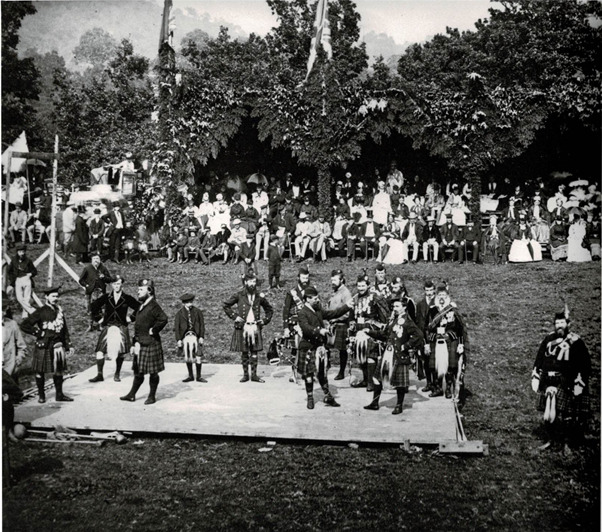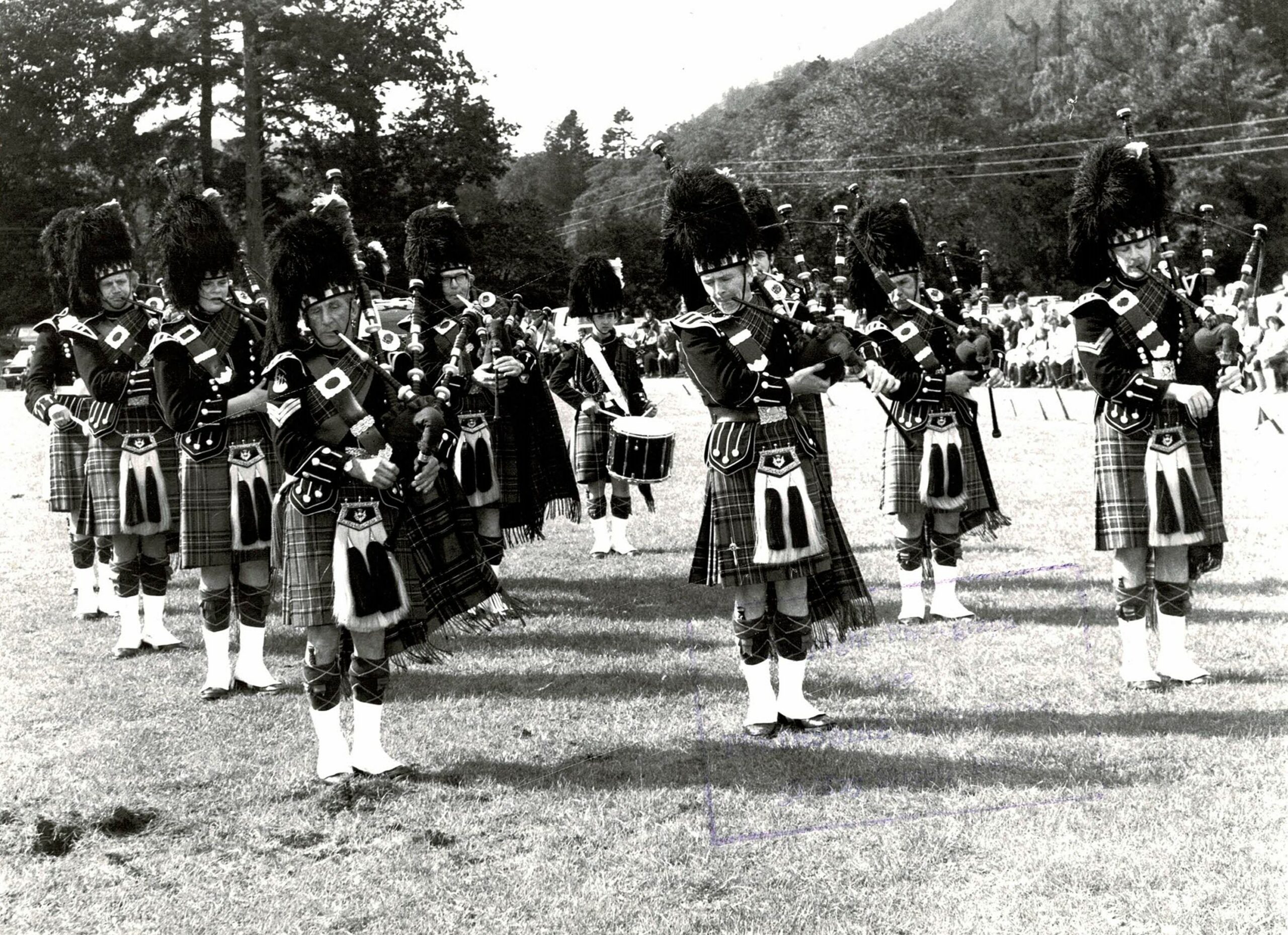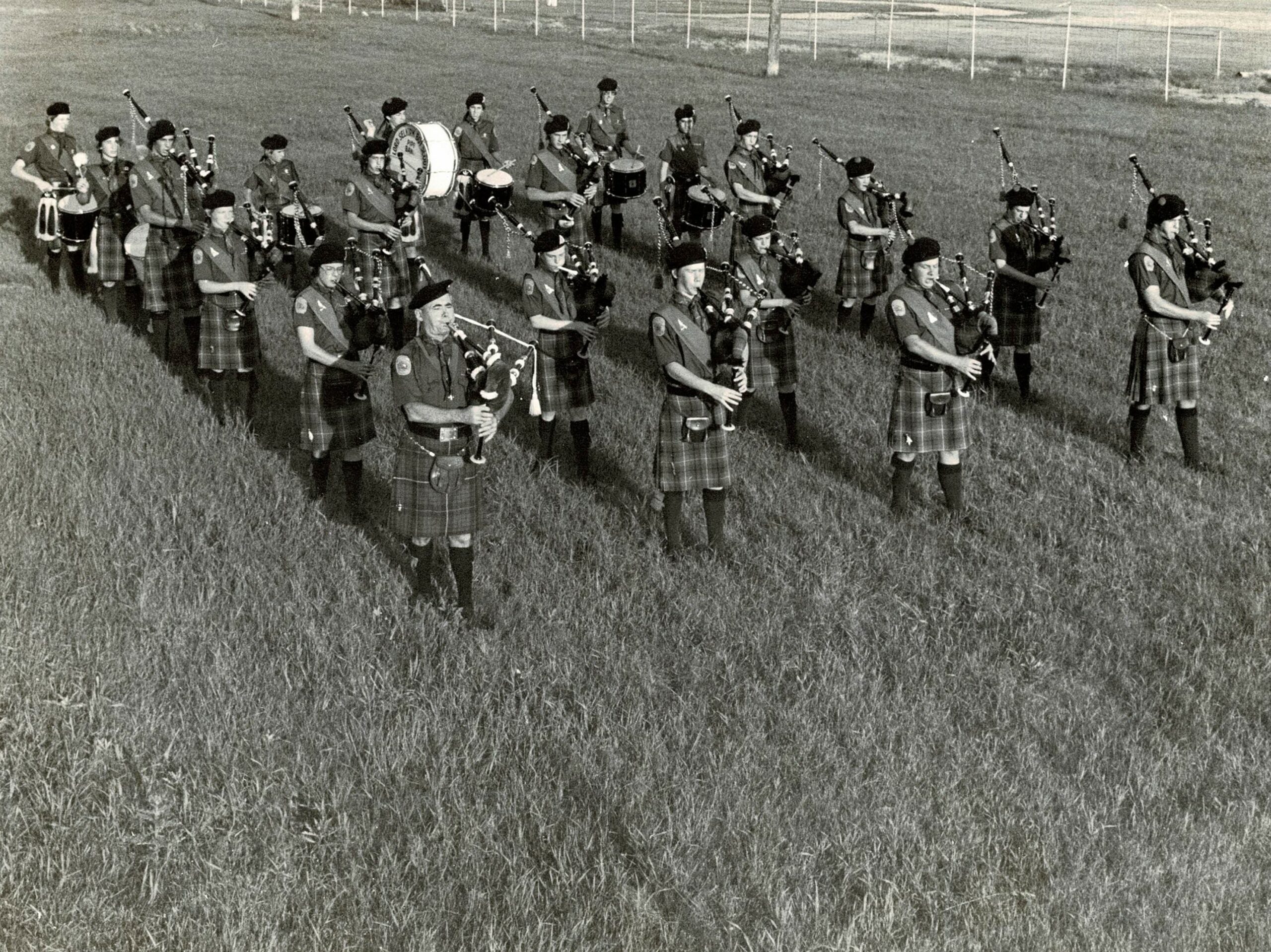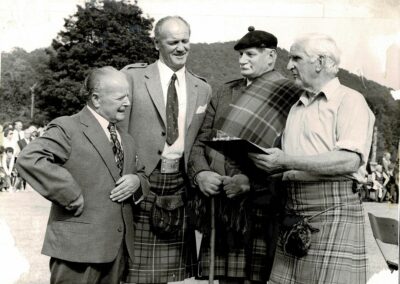Birnam Highland Games
2025 marks the 161th anniversary of the Birnam Highland Games. The games have a long and successful history within Birnam and Dunkeld. The Birnam and Dunkeld Highland Games used to run alongside each other, however in 1864 due to the Death of the sixth Duke of Atholl, the Duchess cancelled the Dunkeld Highland games in mourning as the Duke was the chieftain of the Games.
On the 21st of July 1864, a public meeting was held in Birnam to decide the fate of the Highland Games that year in Birnam due to the postponing of the games in Dunkeld. The public decided to continue the games in Birnam that year despite the death of the Duke, a committee was then formed to enable the running of the games.
The Games held in 1864 in Birnam were a great success, the first meeting of Birnam Highland Games took place in Birnam in a field belonging to a Mrs N. Campbell on the 24th August 1864. They proved to be so successful it is recorded that after making donations of £3.3s to Perth Infirmary and £2.12s 6d to the Birnam and Rohallian curling club, £40 was left to the Committee’s credit. This was placed in the Commercial Bank – now the Taybank Hotel. The first Chieftain appears to have been R.S. Menzies who served in this capacity from 1864 to 1879. In 1865, the Committee, after talking over the subject, came to the conclusion that Birnam could afford to continue the Games every year without interfering with the success of the Dunkeld Games, however by 1872 the Birnam games were so successful the Dunkeld games ceased to run.

Photograph by A.F. Mackenzie of the Highland Dancers at the Highland Games of 1872 in Birnam.
It is rumoured that the initial meetings of the games committee were held under the Birnam Oak – the last survivor of Macbeth’s Birnam wood. Despite this lovely story, there is no concrete evidence of this occurring. The first records of the meetings which were recorded come from around 1870 when the meetings were held in the Station Rooms at Birnam Station.
The games continued consistently until the outbreak of war in 1914 when it was decided to postpone the game until such time there was no war. The games did not take place again until post 1918 and the end of the first world war.
For the most part, the Birnam games run smoothly, there have been however years such as 1934 in which there was a pony race scheduled to be held. Much to the delight of the audience of the games. There was a slight hitch in their plans however as, the horses did not arrive at their allotted time, and due to the fact there were no mobile phone in this day there was no way to trace the horses. They eventually arrived at the field, several hours after the event. These catastrophe left the audience disappointed and the organisers embarrassed, to much amusement, one horse had arrived at the event on time, ironically named “Chase me”.

Newspaper Clipping and advertisement for the Pony trot which never happened!
What’s your favourite horse’s name?
In 1939, the games were held as usual on the 26th of August, just before war was declared on the 1st of September. The committee had their last minuted meeting of the war in 1941 in which the equipment for the games was put into safe storage as the games filed was ploughed and used for food production for the war effort. As the war ended in 1945, the next meeting of the committee in was in early 1946.
A selection of programmes for the Birnam Highland games.
For many years the games continued happily, the main events included pipe bands, track and field, highland dancing and “heavy events” which involve strong man feats and lots of competitive energy whilst the entrants try to prove themselves victorious as the strongest individual competing. Despite the weight of these objects, the competitors make the tasks seem easy as the weights flight across the field or tossing the massive cabers without a struggle. Example videos of how these events take place can be seen below.
3D Image of a 56lb weight for height used in the Birnam games and short video on the process of the actual event.
3D Image of a 16lb shot put ball used in highland games at Birnam and a short video on the event.
Previously in the games, the tug of war was a popular event, however overtime the number of contestents dwinlded and eventually the event was cancelled. When ever people see old games posters they seem to mention how fun the tug of war seems, maybe one day it will make a comeback!
In recent years a new even has risen in popularity at the highland games, The World Championship Haggis Eating Competition in which people compete to see who can eat a whole haggis the quickest! Alongside this there is also the Kiltie dash where anyone wearing a kilt is welcome to compete in an old fashioned running race.
The pipers and highland dancers are images which are synonymous with the highlands of Scotland, the highland dancers and pipers often come from far a field in order to compete in highland games events, as there are several each year it is possible to compete in several gatherings. There are two groups of dancers within the Birnam highland games one group is for dancers from within Perthshire and the other is for all dancer who wish to compete. Alongside the competitive piper performances, there are yearly pipe band displays which draw large crowds of people to enjoy the music.
1. Perth or Crieff pipeband, date unknown. 2. Lord Selkirk Boy Scout Band from Winnipeg, Canada. August 1981. 3. Highland Dancers around 1900. 4. Archie Alves, piper, 1959.
There is a strong feeling of tradition at these games which is in part due to the dedicated work of those involved, the Steuart-Fothringham’s of Murthly have been involved in the running of the games as the chieftains for well over 100 years across several generations! A big thank you to all those involved for their hardwork! The games this year will be held on Saturday the 30th of August.











